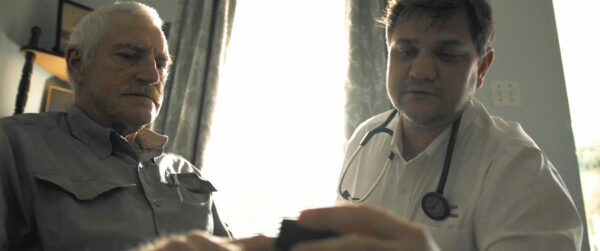Ask the Experts

COPD Diagnosis Education
I went to my doctor and he told me I had COPD. Now what?
If you are one of the 16 million Americans living with COPD, know that you are not alone. Although there is no cure for COPD, there are treatments and programs that can help to slow the disease progression.
What is COPD?
The Centers for Disease Control defines Chronic Obstructive Pulmonary Disease (COPD), as a group of diseases that cause airflow blockage and breathing-related problems. It includes emphysema and chronic bronchitis. Picture this in your mind when trying to relate to chronic bronchitis. When we take our morning shower or nightly bath, we assume that when we let the water drain, it will work just like it was intended to do. What happens when the water starts to drain slower than normal, moving through the pipes at a much lower pace than it should? There is usually a cause behind this. Whether hair is clogging the drain or there’s mineral build up on the side walls of the pipe, both are obstructing the flow of the water.
Your lungs and airway work under the same basic principals. The more open the pipes, the smoother the air will flow—or in the example of the drain, the water runs through smoother and with less effort.
Emphysema works under different principles than those of chronic bronchitis. In Emphysema, your respiratory system is taking in plenty of air but the lungs cannot efficiently use the oxygen because of a diffusion problem. Tiny sacs in your lungs called alveoli take the oxygen that you breathe in and grab the oxygen molecule and pull it into your bloodstream. From here your heart takes over and distributes that oxygen to the rest of your body.
The problem with emphysema is that if the alveoli are damaged they can not as efficiently grab and distribute the oxygen that your body needs. The main reason is decreased surface area within the lungs. Picture your alveoli as a tiny bunch of grapes. When the grapes are full and plump they have more surface area to grab onto the oxygen molecule. If you deflate or pop those grapes, there is less surface area for your body to grab the much needed oxygen that it needs.
How did I get COPD?
There are several factors and causes that can contribute to the development of this disease. In the case of our Atomic Heroes and former DOE workers, many causes can be attributed to their work history and occupational materials exposures encountered while working in DOE facilities. Common hazards include dust, silica, asbestos, mining dust, sulfur dioxide fumes, cadmium fumes, as well as other heavy metal fumes from welding.
Signs and symptoms of COPD include but are not limited to:
- Shortness of breath, especially during physical activities
- Wheezing
- Chest tightness
- A chronic cough that may produce mucus (sputum) that may be clear, white, yellow or greenish
- Frequent respiratory infections
- Lack of energy
- Unintended weight loss (in later stages)
- Swelling in ankles, feet or legs
How Nuclear Care Partners can help with your COPD Diagnosis
Here at Nuclear Care Partners, we are always looking for new and inventive ways to help our patients maximize their quality of life while battling their COPD diagnosis. That’s why we created our BreatheBetter Program, which allows you, from the comfort of your own home, to work on simple breathing exercises designed by healthcare professionals to maximize your lung function and lung health.
| Receive education on your specific disease and disease process. | Learn from a BreatheBetter nurse and practice a variety of lung exercises to help with your breathing. | Find comfort in knowing that we will advocate for you and your lung health needs to your physician(s). | Learn how to properly use and care for your inhalers, concentrators, and other medications and devices. |
|---|
Check Out More Atomic Health News Editions.


